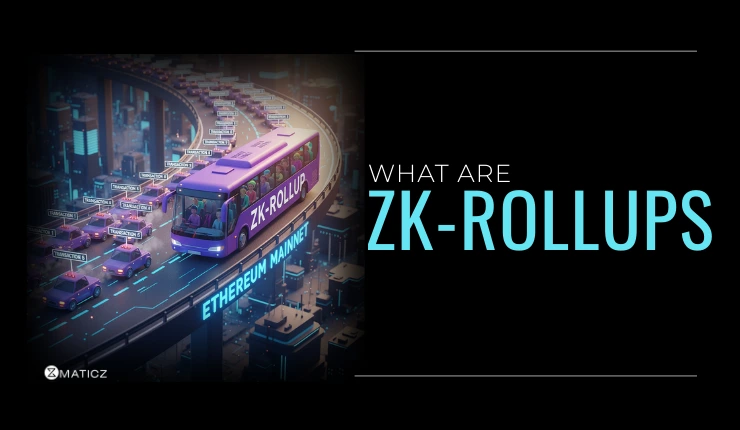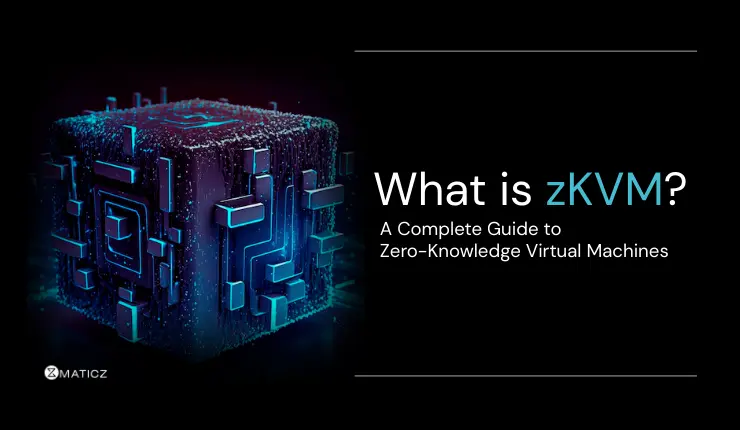Share Posts
Eth2 Current Update: Ethereum 2.0 Beacon Chain Explained
46
5166
103
Beacon Chain - Overview:
The Beacon Chain is the central authorization body that acts as the managing entity monitoring the transactions that are subject to take place within the latest version of the globally recognized exchange the Ethereum2.0. The Ethereum 2.0 is a set of interconnected updates to the already existing Ethereum to improve features such as security and scalability.
Timeline:
Phase 0:
Phase 0 refers to the launch of the Beacon chain. Initially, there were about 16,384 validators validating the process.
Phase 1:
Phase1 refers to the process of creation of shards, with the creation of the desired amount of the projected number of shards, the process proceeds to the next phase of the timeline.
Phase 1.5:
After phase 1 is complete, the phase1.5 begins to accomplish. The phase1.5 is associated with the linking of eth1 as one of the shards in eth2.
Phase 2:
This will occur only when there is no inference of a considerable amount of the shards. In most cases, the data sharding as well as roll-ups will be more than enough to carry out operations.
Ready for Launch:
The deposit contract of the Beacon chain reached its threshold value of 524,288ETH on 24th of Nov 2020 which gave it a grant of access to be launched on 1st Dec 2020. The Beacon chain can validate shards up to a maximum of 64 shards. As of morning, reports noted on 1st Dec 2020 about 877,249 ETH remained as stakes within the Beacon chain deposits.
Rejuvenated Attributes:
Scalability:
The already existing version of Ethereum came up with transactions up to 15 per second. The current version of Ethereum is designed to transact a minimum of 1000 transactions per second. The number of transactions does not appear at the cost of increasing the size of the node. Increasing the node size will turn out to be a delimiting factor that will cost the reputation of the Ethereum network.
Sustainability:
The Proof of Work-based consensus model requires a lot of computational power and energy. To upgrade to a more energy-efficient protocol, a set of rules called the serenity were to be used. Later on, the serenity was collectively termed as the eth2.
What’s new?
When Ether last came up live in 2015, Ether defined its working models through the Proof of Work algorithm. The current release of Ethereum is based on the concept of Proof of Stake which is entirely different from that of the previous Proof of Work concept.
Proof of Work (POW) vs Proof of Stake (POS):
The POW showcases a certain amount of its transactions to the corresponding co-participants to prove its secure and scalable mode of transaction. The POW introduces a new block into the Blockchain Network and it comes up with a motto of confirming and completing the associated transactions. Through the POW, miners compete against each other. The miners are nothing but nodes carrying out transactions. The Ethereum POW is referred to as the ProgPow.
On the other hand, POS doesn’t even have a number of steps involved; POS selects the next block randomly based on the number of stakes that are possessed by the participant of the process. In POS the participant has to stake a certain amount as a security deposit to take part in the trade. The Ethereum POS is called the Casper.
POS Advantages:
• Less susceptible to attack.
• Efficient energy consumption.
• Reduced Hardware usage.
• Increased scalability to the network.
POS Over POW:
POS gets rid of the power consumption constraints that occur with respect to the Proof of Work. POS is devoid of miners as in the case of POW, which increases the computational cost of the protocol. POS is based on the economic incentive phenomenon.
Beacon chain Features:
• Maintain POS of the Protocol
• Managing the Validators
• Managing the stakes
• Monitoring the Shards
• Reward and rules specification
These are the processes that are extensively carried out by the Beacon chain. The Beacon chain through its multi-functional benefits will be an unavoidable aspect in the upcoming update of the Ethereum2.0.
Process involved in Beacon chain:
Sharding:
Sharding normally is a branching process. Breaking up of complex process into a number of simple processes is called sharding. Sharding leads to the breaking up of an entire Blockchain-based product into a number of small such instances. Sharding does not have a direct effect on transactions. In eth2 each shard actually is a chain, initiating with the number of 64 shards. The sharding address the scalability queries of the eth1.
Layer2 Scaling:
How can sharding improve scalability without even taking part in transactions?
Scalability can be improved by the process called Level2 scaling. Level2 scaling also called the rollups will bundle up the transactions and will require only a data shard to store the proof of stake generated as a crypto stake.
Docking:
Through docking, the existing eth chain becomes a mere shard in the network. Docking will put an entire end to the already existing POW algorithm and gives rise to the brand-new phenomenon POS algorithm. Docking will allow the POS to manage smart contracts and provides the transaction history associated with the transition of eth.
Managing the Validators:
To become a validator, one has to mandatorily invest 32ETH to the Ethereum smart contract. After procurement of the specified amount of the Ether, the proof of stake will be provided. This will be an entry controlling aspect, which will proceed further only on completion of the penultimate process. An exclusive committee of validators is available. The validator committee can have slots up to 120. This committee votes to check the validity of the validators taking part in the validation process. Each committee heads over particular shards in the Blockchain Network architecture.
Beacon Block formation:
Beacon usually has a number of slots, with each slot approximately lasting for a specific period of 16 seconds. One of the validators selects from a group of available valid transactions, while the others in a validating committee will vote to check the validity of the block. Once a block is validated it will be allowed to be added up with a shard.
Epoch Creation:
Filling up of 32 such slots will lead to the creation of an epoch.
Block Proportionality:
The number of transactions taking place within a particular block is directly proportional to the number of stakes deposited by the validator.
Slashing:
In case of an inherent invalid transaction, the validating committee declares the transaction as invalid and removes a share of stakes from the person who monitored it; this process is called the slashing in the Beacon chain. The removal of stakes below 16ETH will lead to the removal of that particular validator from the validating committee.
Benefits of the Beacon chain:
• Provides randomness to the process
• Committees championing the validation process
• Crosslinking
• Rapid reward system
• More decentralized
• More data
Business info:
Huobi launches Stake Function:
With the launch of much-anticipated Ethereum2.0, each and every crypto company shifted gears to opt for an exclusive platform supporting the update.
Huobi one of the leading performers in the global Blockchain-based business showed intention towards this update through its announcement.
As of the statement from the company, Huobi will extend its service to the Ethereum 2.0 by availing a one-click function to the beneficiaries. Through this feature, the user will be able to take part in the Ethereum trade as well as the Proof of stake through mining. Also, the current status of the POS is a one-way process and cannot be reversed until certain time periods until the solution to this particular query is found out.
Rocket Pool launch:
Rocket Pool is an Australia based transaction platform, stated that the arrival of New withdrawal contracts associated with etherium2.0 could release a lot of available stakes within 2021.
Message on the Beacon chain:
The recently launched Ethereum Beacon chain came up with a strange message depicting “Mr.F was here” in the graffiti section of the platform. The graffiti section allows users to make comments on their wishes. What is specified? It is noted that the letter F was referred to denote a pseudonym Fahrenheit. Fahrenheit was the pseudonym that specified the first developers of the Ethereum 2.0 block.
Currently in trends:
Prysmatic Labs:
This company currently performs fulfilling the requirements of the clients that wish for the ready services of Ethereum2.0. Not more than a day after the launch of the much-anticipated Ethereum2.0. The Psymatic labs came up with nearly 55 updates that appear to be in association with the transactions relating to Ethereum2.0.
Recognized Updates:
• Anti-splashing attribute
• Contracts for Mainnet
• Capable testnet features
• Prysm external security assessment
Lighthouse:
The lighthouse also came up with 32 features that appear to be in trends aiding to the transactions relating to the Ethereum2.0
Updates:
• Pre-interoperability test
• Request for proposal scheme
• Stress testing
• Halved prototyping
• Fully featured network stack
• P2P development.
• State Transition Tests
What it could bring?
With its last live in 2015, The Ethereum Network took a long break to reveal its version 2 with pioneering features in the transaction field. With alarming features like the reduced processing fee and increased speed of access, Ethereum 2.0 comes up with the potential of pulling more traffic into the crypto sphere. The Ethereum objectives remain on par perfection levels, which are said to be the face of the cryptos in 2021. The Beacon chain comes out with numerous features that lead to the revenue-generating aspects of the future crypto-based business.
Tap Into the Future
The latest insights, posts, and project updates - straight to your inbox.




